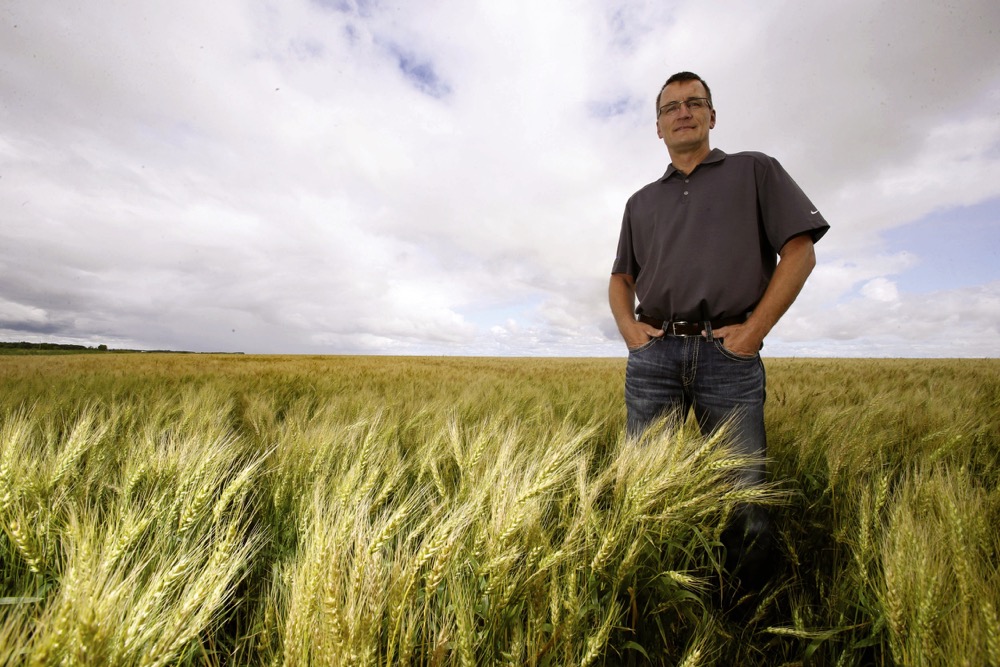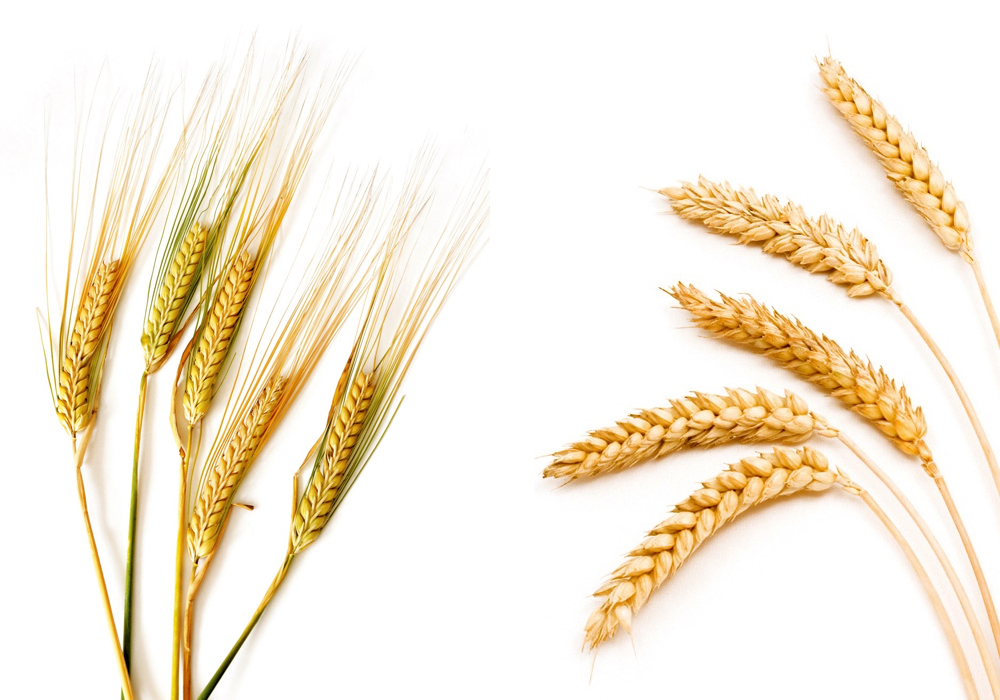Kyle Jewell wasn’t sure what he was getting into when he agreed to join the Maritime Yield Enhancement Network (YEN) project in 2019. Now he can hardly imagine doing without its depth of information and the co-operative spirit he’s seen in the past three growing seasons.
The YEN concept began in the United Kingdom and a Canada/U.S. Great Lakes initiative completed its first year in 2021. Growers, researchers and agronomists are aligning with the YEN concept, which starts with a friendly yield competition to entice growers but keeps them engaged with a detailed summary of their practices and a window of opportunity on how to improve.
The two primary metrics are yield and percentage of potential yield. Most growers like the competitive nature of YEN but the greatest value reportedly comes from the latter statistic that’s calculated by comparing actual and potential yield based on the amount of rain and sunlight captured. The Maritime YEN project began in Prince Edward Island with spring and winter wheat in its first year, adding barley in 2020 and oats in 2021. In 2020, the program expanded to New Brunswick and Nova Scotia.
Read Also

Could crop sharing be a viable option for your farm?
Crop sharing could be a good option for young and beginning farmers.
“I had my eyes opened on what this was all about,” says Jewell, a third-generation producer who manages the cropping side of his family’s dairy operation near Meadowbank, P.E.I. “That was what got me intrigued by the program — all the data they were collecting — and we were seeing the yields they were getting in the U.K. That had me thinking, ‘Why can’t we do this here?’”
Close to home
The timing for Jewell’s participation came with a shift in applying the same management practices as in other crops on the farm. Forages and corn are the primary feed sources and they’ve added soybeans. Jewell’s wife Jane looks after the young stock and dry cows, the latter of which are now fed wheat straw instead of grass forage, known as “the Goldilocks Diet” and the main reason they grow wheat, along with bedding.
In 2020, Jewell earned the silver award for the highest percentage of potential winter wheat yield with 82 per cent (the gold winner was 83). In 2021 he won gold in winter wheat yield with 4.04 tonnes (148.4 bu.) per acre. The detail in the final report that makes the biggest difference.
“What are our land and weather capable of doing and what management strategies can we put in place to get there? With potential yield, it puts everybody on their own playing field and compares everybody, but you’re being compared within yourself,” Jewell says.
One challenge is gauging rainfall and sunlight capture, but the YEN program provides the best approximation of those variables.

“It’s a good benchmarking opportunity because you get to see what others are doing, and that’s important,” he says. “In the dairy industry, we’re always going to these benchmarking workshops where they put six or eight farmers in the room, but there’s not one farm that’s the same.”
Report’s death of detail
The summary of participant performance is almost overwhelming. Jewell’s report on his 2020 winter wheat crop was 18 pages. The one-page summary offered graphs for yield, percentage of potential yield, above-ground biomass, estimated light energy and water captured and heads per square foot.
“Of all the research and extension work I’ve done, I’ve never seen a method of growers learning from growers work as well as YEN,” says Alan Miller, research co-ordinator with the Atlantic Grains Council. “In the first year, we had a grain and oilseed conference and there were 200 people in the room, and for us, that’s big. But each of the winners talked about how they grew their crop. The sharing between growers was amazing and we’d never seen that level of engagement.”
Miller attributes some of the success of the Maritime YEN program to the voluntary check-off initiative, which enabled the council to leverage the dollar-per-acre allotment gathered by buyers to leverage government funds for research. That process began in 2014.
“The fact there were no grain and oilseed commodity groups in each province gives you the sense of our scale,” says Miller.
Yet the overall impact from the Maritime project is an ever-changing success story: it’s not the same growers lining up for the same awards in each crop. Miller calls it a survey of practical research, with a tremendous amount of power for predicting the elements involved in producing or capturing potential yield. The U.K. project researchers found that when they broke things up into genetics and climate and other components, they were shocked at how high a percentage of a farmer’s management played in that equation.
“It’s not the individual treatment but the combinations of what producers are doing,” says Miller. “It’s analyzing nitrogen application and managing the extra growth with a regulator and keeping disease at a minimum through timely fungicide applications. Those three things — one plus one plus one — can add up to 4.5.”
Ongoing collaboration
The depth of knowledge, the willingness to share information about the use of fertilizers, herbicides and fungicides and plant growth regulators are fascinating aspects, but researchers are also reaping benefits. Aaron Mills was at the forefront of the Maritime YEN project’s inception and says it’s a constant source of amazement at how growers have jumped in to participate and learn.
“We’re definitely seeing a progression towards higher overall yields for those who are engaging in this competition,” says Mills, a research scientist with Agriculture and Agri-Food Canada in Charlottetown.
The point of the YEN initiative from his perspective came from the initial meetings with discussions about the 20 tonnes per hectare growers were getting in the U.K. Their counterparts in the Maritimes immediately began looking for the recipe, but researchers said, “You’re going to tell us what the recipe is.”
“Growers are more likely to believe a neighbour down the road who had ‘this’ work for them, so the biggest part of this is the peer-to-peer technology transfer,” says Mills, adding that he sees himself as a facilitator. “The biggest part of our contribution as scientists is focusing on those yield components, like the number of heads per square foot and the number of grains per head. Things that are fairly easy to do and provide an accurate estimation of what’s gone on in the field.”
Mills sees the Maritime YEN as an invaluable opportunity to explore the benefits — or drawbacks — of certain practices such as fertilizer use. Early on, growers tended to put a certain amount of fertility with the seed, then top dress to increase protein. Mills tried to correlate the total nitrogen and timing to see how it affected yield.
“It actually negatively correlated with protein and yield in that first year because we didn’t have any rain,” he notes. “Growers kept applying fertilizer yet in the end, it was wasted. They might have had a marginally lower yield if they hadn’t gone in for that late top dress, but it wouldn’t have made any difference.”
Mills says that plant resources and decisions as to what the yield will be are made by the plant half-way through the season. Getting growers to think more about some of those things beyond “Try this and wait till harvest to see what happens” is creating greater awareness of their crop and how it’s developing. Their colleagues in the U.K. measured the number of times a grower visited their fields.
“It positively correlates with the yields,” says Mills. “People who pay more attention to their crop end up having a better crop because they’re visiting it to see the effect of what they’ve done.”
















